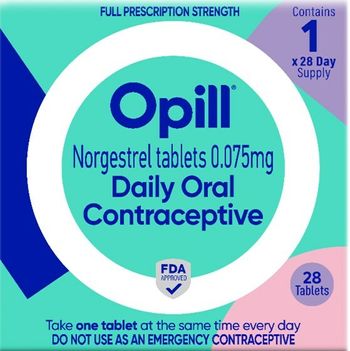
Managing Large Claims Down to Size
Large cases generate four out of every five dollars in direct medical expenditures. Doesn't it make sense to pay special attention? Here's how it's done.
Managing Large Claims Down to Size
By Karen L. Andalman McIntyre
Large cases generate four out of every five dollars in direct medical expenditures. Doesn't it make sense to pay special attention? Here's how it's done.
Employers have lately taken some comfort in scattered predictions of a moderating trend in health care inflation. But even if the rates for total costs, insurance premiums and prescription drug spending drop below double-digit levels an unlikely scenario for the foreseeable future the fact remains that large claims those that exceed $10,000 account for over 80 percent of medical expenditures.
Should these worst of times become the best, companies still will need to find ways to save claim dollars. Large case management does exactly that when instituted early in potentially catastrophic illnesses. In fact, on average, for every dollar spent for large case management the plan will save at least eight dollars in claim dollars spent.
Numerous studies have demonstrated that well informed and fully involved patients make better use of treatment and get better results. Similarly, the collaborative process of case management promotes patient advocacy and enhances communication among patients, families, physicians and employer. Properly implemented case management is an ongoing, proactive process that assesses, plans, implements, coordinates, monitors and evaluates available resources to assure that the patient receives the most cost effective and highest quality care needed to achieve the best possible outcome.
Perhaps the best way to show the savings that can be achieved through large case management is by example.
Averting a megabuck claim
A patient was admitted to the ER at St. Anthony's Hospital in Michigan City, Ind. She had appendicitis and was 23 weeks pregnant. After a successful appendectomy, the patient started having uterine contractions. They continued despite IV medications, and she was started on additional medications. The large case management program began at this point.
With the obstetrician's permission, the case manager arranged an assessment for possible discharge with specialized home care services. The complete evaluation convinced the physician to authorize the patient's discharge to her parents' home with severe physical restrictions. The home health care nurse educated both the patient and her family on the medications and their side-effects, as well as the use of the CADD-Micro Pump and the Human 37 monitoring system. The first piece of equipment delivers a precise dose of medication through an implant under the skin. A home health nurse stops by regularly to assure that there is no infection at the site. The second is a telemonitoring device that detects uterine contractions or fetal distress. (Picture a blood pressure cuff that's big enough to wrap around a pregnant woman.)
The patient was apprehensive at first, but thanks to excellent teaching and support from her case manager, she quickly gained confidence. At least twice daily she attached herself to the human monitor, and the graph was assessed by trained personnel at a central location.
Over the course of two months, the physician tried a number of times to wean down the dosage of the medications. Increased contractions prohibited further reductions, but the patient was at least able to switch to an oral preparation of the same drug. She was discharged from home health care services at 37 weeks, after 80 days that were significantly less expensive at least $1,000 a day less for home vs. hospital care and significantly more comfortable than standard treatment as an inpatient in the acute care setting.
At 41 weeks, she delivered a healthy baby girl (7 pounds, 9 ounces). Carrying the baby to full-term avoided enormous costs in a neonatal intensive care unit. A premature baby's physical problems are numerous and multisystem in nature. A 23-week baby requires neonatologists, ophthalmologists, neurologists, cardiologists, physical therapists, surgeons of various specialties, full-time one-on-one nursing staff and respiratory therapists to assist with all the ventilatory requirements. A variety of reports cited by the federal Agency for Healthcare Research and Quality suggest the consequences of premature birth:
- Infant respiratory distress and low birthweight are two of the five most expensive reasons for hospitalization, exceeding the average cost per stay of leukemia and heart valve disorders.
- Infants weighing less than 1.7 pounds generate an average $274,000 in medical expenses during their first year, if they survive. Survivors that weighed 2.8 to 3.3 pounds generate expenses of $58,000.
- Twenty to 25 percent of very low birthweight infants have major developmental disabilities such as cerebral palsy, mental retardation, blindness or deafness.
Not all potential savings are as dramatic, but opportunities abound. Chemotherapy, for instance, needn't always take place in a hospital. Properly educated about dealing with side effects of treatment and confident in support that is only a phone call away, many patients are actually more comfortable in their homes and among their families. Prompt implementation of a rehab program including specific and achievable return-to-work goals can speed recovery after a stroke or heart attack. Whatever the medical condition, the presence of a knowledgeable advocate in the person of a case manager lends confidence to the patient and support to the physician who may not have time to investigate alternatives.
The makings of effective large case management
For effective case management both the physicians and patients must be accommodated by the case manager actively negotiating prices with their preferred vendors when appropriate or possible. Onsite visits should also be made to evaluate the level of care, quality of equipment and services. Large case management intervention may also include:
- Arranging a transfer from the hospital to an extended care facility, nursing home, specialty facility or home with home health care.
- Arranging for durable medical equipment, medications and professional services as indicated.
- Family training and education, as well as counseling.
The case manager should submit monthly reports for active large case management. The reports need to reflect true cost savings obtained through actively negotiating discounts on medications, medical equipment and supplies, hospital bills, outpatient charges, home health services and sub-acute facility charges. Through communication with physicians, health care providers and patients, the case manager may also realize cost savings by encouraging and facilitating less costly alternative plans of care: for example, home care vs. hospitalization. The fees for large case management are paid for by the savings to the plan.
In addition to the above diagnosis there are situations where large case management can lead to cost savings while enhancing appropriate care. These include:
- Repeated inpatient admissions, excessive length of stay or frequent treatment.
- Potentially large dollar claims.
- Chronic or progressive disease.
- Opportunity to transfer a patient to a facility offering an appropriate level of care more cost effectively.
- Lack of qualified caregivers in the home setting.
- Multiple diagnoses.
- Acute or subacute rehabilitation of physical, speech or occupational therapies that exceed three months of treatment.
- IV therapy or parenteral nutrition.
- Severe injuries.
- Durable medical equipment needs.
This list is not all-inclusive; therefore, any apparent long-term illness can be considered a candidate for large case management.
More B&H Articles on This Topic:
Resources:
Karen Andalman McIntyre. Managing Large Claims Down to Size.
Business and Health
Aug. 1, 2003;21.
Newsletter
Get the latest industry news, event updates, and more from Managed healthcare Executive.






















































